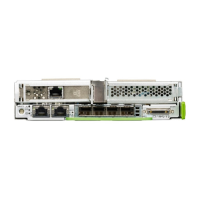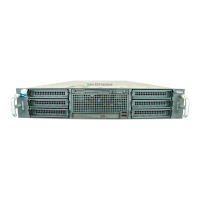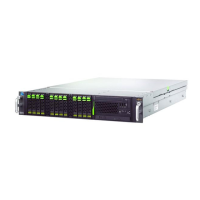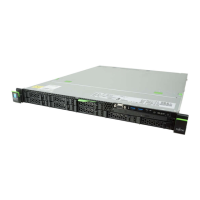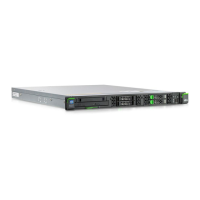Installing the NAS
Configuration
Description
RAID 5 data carriers The data is distributed to all ha rd disks in
the RAID 5 network. The parity information
issavedoneachharddisk.Ifonehard
disk in the network fails, the netwo rk
transfers to degenerated mode. After the
failed hard disk has been replaced with
anewharddisk,thedatafromtheother
disks in the network, which contain the
same parity information, can be restored.
To create a RAID 5 network, at least 3
hard disks are required. The storage
capacity of a RAID 5 network is equ al to
(N - 1 (size of the smal l est hard disk)). N
is the total number of hard disks in the
arrangement.
RAID 6 data carriers The data is distributed to all hard disks
in the RAID 6 network. RAID 6 differs
from RAID 5 in that a second set of parity
information is distributed acro ss all disks
in the network. The network can tolerate
the failure of two d isks.
To create a RAID 6 network, at least 4
hard disks are required. The storage
capacity of a RAID 6 network is equ al to
(N - 2 (size of the smal l est hard disk)). N
is the total number of hard disks in the
arrangement.
RAID 10 data carriers
RAID 10 combin
es the advantages of
RAID 0 and RAI
D 1 in one system. It
offers secur
itybymirroringalldatatoa
second set o
f hard disks and by applying
striping on
all hard disk records in order to
speed up th
e data transfer.
RAID 10 req
uires an even number of hard
disks (at
least 4 hard disks). The storage
capacity
of the RAID 10 h ard disk volum e
is (size o
f hard disk with lowest c apacity
in the ar
ray) N/2. N is the number of hard
disks in
the volume.
With RA
ID 10, a maximum of 2 failed hard
disks o
ut of 2 different pairs is permissible.
► Click on Next and then on Start installation.
Fujitsu 21

